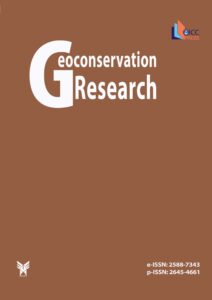A Unique Late Cretaceous dinosaur locality in the Bakony-Balaton Geopark of Hungary (Iharkút, Bakony Mts.)
Authors
-
Gabor Botfalvai
*
 1, 2
1, 2
-
László Makádi
 3
3
-
Gáspár Albert
 4
4
-
Attila Ősi
 2
2
Abstract
Iharkút is a Late Cretaceous (Santonian) vertebrate-bearing locality in the Bakony Mountains of western Hungary, where productive and continuous paleontological excavations have been carried out in the last twenty years. Fieldwork resulted in a very rich and diverse assemblage of terrestrial and freshwater animals, including fishes, amphibians, turtles, lizards, a freshwater mosasaur, pterosaurs, crocodilians, dinosaurs, and birds. This abundance and diversity of fossil taxa contribute to understanding of European Late Cretaceous continental vertebrate faunas. Furthermore, the site’s paleogeographic position in the western Tethyan archipelago and its Santonian mean that it fills an important gap in the Late Cretaceous record of continental vertebrates in Europe. The locality is among the geological high points of the Bakony-Balaton UNESCO Global Geopark. The fossils are internationally important, which draws the attention of both scientific and non-scientific geopark visitors.
Read the full text of the article


